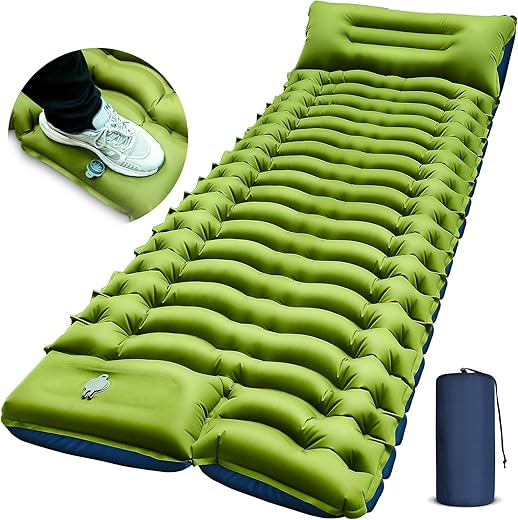
When you’re out in the wilderness, nothing beats the tranquility of a starlit sky after a long day of hiking. A comfortable night’s sleep can make all the difference, and that’s where self-inflating sleeping pads come in. These essential pieces of camping gear offer a cozy oasis, shielding you from the cold, hard ground. However, even the best sleeping pads can run into hiccups, leaving you frustrated when all you want is a restful night. In this blog post, we’ll explore some of the most common issues that can arise with self-inflating sleeping pads and share practical troubleshooting tips for getting back to blissful sleep under the stars. Whether you’re a seasoned adventurer or a recreational camper, we’re here to help you navigate these challenges and enhance your outdoor experience.



Understanding Self-Inflating Sleeping Pads
Self-inflating sleeping pads have gained popularity among outdoor enthusiasts, thanks to their unique blend of convenience and comfort. This section will delve into how these pads work, their construction, and the materials that set them apart from traditional sleeping options, such as air mattresses.
How Self-Inflating Sleeping Pads Work
Self-inflating sleeping pads utilize a clever mechanism based on foam encased in a fabric shell. When the valve is opened, air enters the pad, allowing the foam to expand and fill the sleeping surface automatically. Here’s a step-by-step breakdown of the inflation process:
- Open the Valve: When you’re ready to set up your sleeping pad, you simply unroll the pad and open the valve.
- Foam Expansion: Inside the pad is a layer of open-cell polyurethane foam. Absorbing air, this foam expands, creating a comfortable sleeping surface.
- Self-Inflation: Within minutes, the foam has done its job: the pad pops up and begins to reach its loft.
It’s important to note that while the pad inflates on its own, you may want to add a few breaths of air for added firmness, especially if you’re looking for a particular comfort level.
Construction and Materials
Self-inflating sleeping pads are generally made from durable and lightweight materials that withstand outdoor conditions. Here are some common materials and their characteristics:
- Top Fabric Layer: Typically crafted from polyester or nylon, which is durable and resistant to abrasion.
- Foam Core: Open-cell polyurethane foam plays an essential role in creating air channels that provide insulation and comfort.
- Bottom Fabric Layer: Generally made from denser materials to enhance durability and puncture resistance.
Popular Models to Consider
When shopping for a self-inflating sleeping pad, several models stand out for their quality and features:
- Therm-a-Rest NeoAir XTherm:
- Weight: 15 oz
- R-Value: 6.9 (ideal for colder conditions)
- Thickness: 2.5 inches
- REI Co-op AirRail 1.5 Sleeping Pad:
- Weight: 1 lb 11 oz
- R-Value: 2.2
- Thickness: 1.5 inches
- Features: Pillow baffles for better neck support.
- Sea to Summit Ultralight Insulated Mat:
- Weight: 1 lb 3 oz
- R-Value: 3.1
- Thickness: 2.5 inches
- Benefits: Packs down small for easy transport.
Mechanism of Inflation and Deflation
Inflating and deflating a self-inflating pad is straightforward:
Inflating
- Open the valve.
- After the *foam has expanded fully, close the valve.
- Add a few breaths for desired firmness if needed.
Deflating
- Open the valve and roll the pad from the opposite end to push out air.
- Close the valve and store it in its carry bag.
Benefits Over Traditional Air Mattresses
Self-inflating pads offer numerous advantages compared to traditional air mattresses:
| Feature | Self-Inflating Sleeping Pads | Traditional Air Mattresses |
|---|---|---|
| Weight | Lightweight | Heavier, making them less portable |
| Ease of Setup | Quick and effortless | Requires manual inflation, can be cumbersome |
| Compact Size | Rolls up smaller | Bulkier, takes up more space |
| Thermal Insulation | Superior insulation ratings | Often lacks insulation |
| Durability | Designed for rugged outdoor use | More prone to punctures |
Practical Use Cases
- Camping: A great choice for regular backpackers looking to minimize weight without sacrificing comfort. The Therm-a-Rest NeoAir XTherm is a favorite for its warmth and lightweight design.
- Backpacking: Compact options like the Sea to Summit Ultralight are perfect for hikers who need gear that fits easily in a backpack.
- Car Camping: Larger models like the REI Co-op AirRail provide a luxury experience when you can pack a bit more weight without worry.
Through these insights into self-inflating sleeping pads, it’s clear they provide a practical and efficient solution for both casual campers and hardcore backpackers alike. Whether you’re seeking extra insulation, comfort, or compact storage, these pads will not disappoint.
Common Issues with Self-Inflating Sleeping Pads
Self-inflating sleeping pads are a popular choice among campers, hikers, and outdoor enthusiasts for their convenience and comfort. However, like any piece of gear, they can encounter issues that may hinder your outdoor experience. Below are some of the most common problems that users face, along with their symptoms and potential causes.
Insufficient Inflation
One of the most prevalent issues with self-inflating sleeping pads is insufficient inflation. Users may find that their sleeping pad does not fully inflate, leading to an uncomfortable sleeping surface.
Symptoms:
- The pad remains flat after the expected inflation time.
- There’s a noticeable dip or discomfort while lying on it.
Potential Causes:
- Old or Worn Foam: Over time, the foam inside the pad can become compressed and less effective at self-inflation. For instance, models like the Therm-a-Rest ProLite Plus may lose their effectiveness if they’ve been used for many seasons.
- Temperature Effects: Cold temperatures can make the foam materials less flexible and affect inflation rates.
- Blocking of Air Entry: Ensure the valve is opened properly and not obstructed.
Leaks
Leaks can render a self-inflating sleeping pad virtually useless, leading to loss of air and subsequent discomfort.
Symptoms:
- The pad deflates rapidly after inflation.
- You can manually inflate the pad, but it loses air quickly overnight.
Potential Causes:
- Punctures or Cuts: Physical damage from sharp objects or rough terrains. Brands like Big Agnes Insulated Air Core Ultra pads are generally durable, but they can still get punctured accidentally.
- Seam Failures: Frequent folding and storage might lead to seam integrity issues. Products with poorly sealed seams such as the REI Co-op Self-Inflating Sleeping Pad may develop leaks over time.
- Age: Over time, materials can degrade, leading to porous sections that allow air to escape.
Valve Malfunctions
Improper valve function can result in inconvenience or discomfort while using the sleeping pad.
Symptoms:
- The pad does not hold air when the valve is closed.
- Difficulty in inflating or deflating the pad.
Potential Causes:
- Defective Valves: Some models, like the Sea to Summit Ether Light XT, may have manufacturing defects in their valves which can prevent proper sealing.
- Debris or Dirt: If dirt gets into the valve mechanism, it can hinder performance. Regularly maintaining the valves is recommended for models like the Klymit Static V series, which offers a streamlined valve system but can be affected by blockage.
- Poor Quality Control: Inexpensive or unknown brands may have lower quality valves, compromising usability.
Loss of Insulation
Another issue encountered is a loss of insulation, which can lead to cold discomfort while camping in colder conditions.
Symptoms:
- Noticeable cold coming from the ground when lying on the pad.
- The pad feels significantly cooler than expected during use.
Potential Causes:
- Material Degradation: Over time, insulation material in pads like the NEMO Tensor Ultralight can break down, affecting thermal performance.
- Moisture Damage: If a pad becomes wet (either from condensation or a spill), the insulation can be compromised. For instance, Exped MegaMat pads use foam that can absorb moisture if not properly stored or used.
- Poor Design: Some pads may lack sufficient R-value for cold temperatures. It’s crucial to check the R-value when choosing a sleeping pad—choices like Sierra Designs Airbed offer more insulation for colder weather.
Quick Reference Table of Common Issues
| Issue | Symptoms | Potential Causes | Example Products |
|---|---|---|---|
| Insufficient Inflation | Pad remains flat; dips present | Old foam; temperature effects; blocked valve | Therm-a-Rest ProLite Plus |
| Leaks | Rapid deflation; manual inflation needed | Punctures/cuts; seam failures; age | Big Agnes Insulated Air Core Ultra |
| Valve Malfunctions | Pad won’t hold air; difficulties inflating | Defective valve; debris; poor quality control | Sea to Summit Ether Light XT |
| Loss of Insulation | Cold air permeates; R-value inadequacy | Material degradation; moisture damage; poor design | NEMO Tensor Ultralight |
Understanding these common issues can help you take proactive measures when choosing and maintaining your self-inflating sleeping pad, ensuring that it serves you well during your outdoor adventures.
Troubleshooting Tips
When it comes to ensuring a good night’s sleep while camping or backpacking, a reliable sleeping pad is essential. However, even the best pads can encounter issues over time. Here’s a comprehensive guide to troubleshooting common problems you might face with your sleeping pad.
Inflating Your Pad Correctly
Step-by-Step Inflation Process
Proper inflation of your sleeping pad is crucial for comfort and support. Here’s how to do it, especially if you have a model like the Therm-a-Rest NeoAir XTherm:
- Unroll the Pad: Lay the pad flat on the ground away from sharp objects.
- Open the Valve: Locate the inflation valve—most models have a one-way valve to prevent air from escaping.
- Use a Pump: For pads like the Sea to Summit Ether Light XT, use a bag pump or a compatible air pump to inflate. Avoid using your breath to prevent moisture inside.
- Fill to Firmness: Adjust until it’s firm but not overly rigid. Too much air can cause discomfort, while too little can lead to back pain.
Troubleshooting Underinflation
If you find your pad isn’t holding air:
- Check the valve for damage or debris. Clean it if needed.
- Ensure the valve is fully closed after inflating.
- Use a liquid food-safe detergent to spot any leaking areas; look for bubbles forming.
Checking for Leaks
Identification Process
Detecting a leak can be tricky, but with procedures in place, it can be done:
- Visual Inspection: Begin by closely examining the seams and surface of the pad for punctures or tears.
- Submersion Technique: Inflate your pad and submerge it in a body of water, watching for bubbles that reveal leak locations.
- Marker Outline: Use a water-resistant marker like a Sharpie to outline where bubbles emerge, making repairs simpler.
Repairing Leaks
To repair leaks in your sleeping pad, consider these products:
- Tenacious Tape: This specialty adhesive tape can provide an emergency patch. Simply cut a piece to cover the damaged area, ensuring it overlaps at least a quarter of an inch on all sides.
- Repair Kits: If you own an REI Co-op Flash Air Pad, purchase their dedicated repair kit, which is designed for the specific materials of your pad.
Resolving Valve Problems
Valve Issues and Solutions
Issues with valves are a common problem. Here’s how to troubleshoot:
- Sticking Valve: If it won’t open or close, inspect for dirt or small objects obstructing it. Clean it carefully with a brush or cloth.
- Valve Leakage: Seal the valve area with silicone sealant, specially designed for inflatables if you cannot achieve full closure.
Maintaining Insulation
Longevity and Care Tips
Ensuring that your sleeping pad maintains its insulation properties is crucial. Follow these tips:
- Proper Storage: Store your pad rolled loosely rather than tightly folded, and avoid leaving it in direct sunlight for prolonged periods to prevent material breakdown.
- Regular Cleaning: Clean your pad with mild soap and warm water. Avoid harsh chemicals that may degrade materials. For instance, use Nikwax Tech Wash for periodic cleaning.
- Avoid Sharp Objects: When out camping, be mindful of rocks and sticks. Keep your sleeping setup clear from potential puncture threats.
Preventive Measures for Future Issues
Best Practices
By implementing diligent habits, you can minimize the need for troubleshooting:
- Pre-Trip Inspection: Always check your pad for leaks and damage before your trip. Inflating it a day before can help identify any ongoing issues.
- Protection Layers: Consider using a sleeping pad cover or investing in a ground tarp like the REI Co-op Flexlite Footprint, which serves as a barrier against ground debris.
- Buy Quality Products: While cheaper alternatives might save you money upfront, investing in high-quality pads like those from Big Agnes or Nemo can provide durability and a lower chance of future issues.
By following these troubleshooting tips and routine maintenance suggestions, you can extend the life of your sleeping pad and ensure you enjoy reliable comfort on every adventure.
Final Thoughts and Solutions
In conclusion, effectively troubleshooting common issues with self-inflating sleeping pads can significantly improve your camping experience. By familiarizing yourself with how these pads function and being proactive in identifying and resolving problems, you’ll ensure a more comfortable rest during your outdoor adventures. Remember, consistent maintenance and vigilance against wear will keep your sleeping pad in optimal condition, ready to support you on each trip. Happy camping!



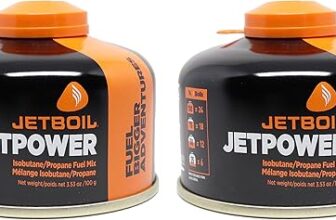
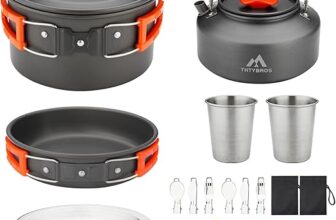
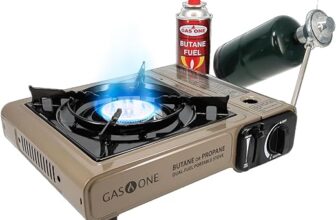
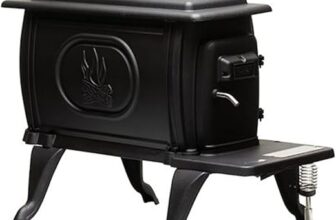


I’ve had so many issues with my Therm-a-Rest NeoAir, like it losing air overnight. Anyone else have that problem? It’s super frustrating!
What about cleaning these pads? Do you have any specific tips to avoid damages while washing?
Absolutely! Cleaning is crucial for maintenance. I’ll write up some care tips in my next article. Thanks for the idea!
I love my REI Flash sleeping pad, but I wish it had a built-in pillow. Any tips on making a DIY pillow with what I already have?
That’s a clever idea! A stuff sack filled with clothes can make a great makeshift pillow. I might include some DIY hacks in the next piece!
Could you dive deeper into the differences between various brands? I’m confused about which one to buy next.
Sure thing! I’ll compare some popular brands in an upcoming article. It’s important to know what fits your needs best, so stay tuned!
Can you explain more about how to properly store these pads? I feel like mine gets damaged easily!
Great suggestion! Proper storage is key to keeping your sleeping pad in good shape. I’ll definitely cover that in a future article. Thanks for the feedback!
I once took my Sea to Summit Ether Light to a camping trip, and it was a game changer! Woke up feeling refreshed. Anyone else have success stories?
So glad to hear that! Finding the right pad can really enhance your camping experience. It’s all about comfort, right?
For anyone having issues with self-inflation, I found that rolling it tighter really helps it inflate faster. Hope that helps!
Thanks for sharing that tip! Rolling it tighter really can make a difference in airflow and inflation time. Keep the tips coming!
You’re definitely not alone! Air loss can be a common issue. Sometimes it’s just a matter of ensuring the valve is sealed properly or checking for tiny punctures. Have you tried any patch kits?
I had a similar issue with my Big Agnes Q-Core pad. I ended up switching to a different model and it’s been way better. Just sharing in case others are struggling!